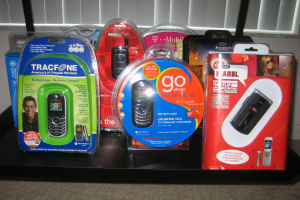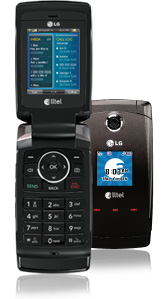Can a new MVNO survive in the current environment?
September 17, 2008/
MVNO 2.0, for such a venture to work. After wishing the company good luck, I spent a good deal of time thinking about this. Here are some things I think would help a company intent on spreading as a virtual operator. There’s plenty to disagree with, so leave your thoughts in the comments.
Cheap minutes
 This is a given. These days, you can’t come in at 15 cents a minute and expect to thrive. If you’re not at 10 cents or lower, you’re at a disadvantage right off the bat. The Internet has made it easy to conduct research, so customers can find out which carrier truly has the lowest rates. If you’re at 15 cents a minute with unlimited nights and weekends, and another company is at 12 with unlimited nights and weekends, well, they’re going to win out. And because it’s so easy for customers to find this information, more and more will go with the cheaper options.
Of course, this isn’t easy. The margin between wholesale and retail has fallen, making it tougher for prepaid companies to profit from their voice minutes. That’s one of the driving forces behind MVNO 2.0. There has to be another way to generate a profit, beyond voice and text. Might as well make the rates as low as possible and focus on value-add to generate the bulk of the profit.
This is a given. These days, you can’t come in at 15 cents a minute and expect to thrive. If you’re not at 10 cents or lower, you’re at a disadvantage right off the bat. The Internet has made it easy to conduct research, so customers can find out which carrier truly has the lowest rates. If you’re at 15 cents a minute with unlimited nights and weekends, and another company is at 12 with unlimited nights and weekends, well, they’re going to win out. And because it’s so easy for customers to find this information, more and more will go with the cheaper options.
Of course, this isn’t easy. The margin between wholesale and retail has fallen, making it tougher for prepaid companies to profit from their voice minutes. That’s one of the driving forces behind MVNO 2.0. There has to be another way to generate a profit, beyond voice and text. Might as well make the rates as low as possible and focus on value-add to generate the bulk of the profit.
Top-notch customer service
 Customer service seems like a golden opportunity for any new entrant to the cellular industry. How many carriers have good customer service? Not decent, not okay, but good. You can certainly count them on one hand, and even then you wouldn’t be using all of your fingers. So if customer service is so universally bad, then why doesn’t a company use that to their advantage?
The problem is that most carriers view customer service as an expense rather than an investment. They have limits on call length, and certainly don’t give their representatives much leeway in how they can solve a customer’s problem. The idea is that the company doesn’t want to “give away” too much — that is, they don’t want to compensate customers for poor experiences. It’s just another customer service cost they’d rather not spend.
What if a company came into the fold with superb customer service? What if they took your word when you said you had a problem, and credited you as such? What if they kept impeccable records of not only your account, but if your calls to customer service? To me, that would be the difference. Cell phones and service fall in the technology sector, and whenever you’re in that realm you’re going to have technical issues. Why not make sure that customers are getting total support?
I can go on and on about customer service in the wireless space, but that’s for another time. For now, I just think that it presents an excellent opportunity for a new entrant. Treat customers right, and they’ll reward you with their business.
Customer service seems like a golden opportunity for any new entrant to the cellular industry. How many carriers have good customer service? Not decent, not okay, but good. You can certainly count them on one hand, and even then you wouldn’t be using all of your fingers. So if customer service is so universally bad, then why doesn’t a company use that to their advantage?
The problem is that most carriers view customer service as an expense rather than an investment. They have limits on call length, and certainly don’t give their representatives much leeway in how they can solve a customer’s problem. The idea is that the company doesn’t want to “give away” too much — that is, they don’t want to compensate customers for poor experiences. It’s just another customer service cost they’d rather not spend.
What if a company came into the fold with superb customer service? What if they took your word when you said you had a problem, and credited you as such? What if they kept impeccable records of not only your account, but if your calls to customer service? To me, that would be the difference. Cell phones and service fall in the technology sector, and whenever you’re in that realm you’re going to have technical issues. Why not make sure that customers are getting total support?
I can go on and on about customer service in the wireless space, but that’s for another time. For now, I just think that it presents an excellent opportunity for a new entrant. Treat customers right, and they’ll reward you with their business.
Kickbacks for referrals
 Yesterday we discussed Virgin Mobile’s referral program. In the post, I noted how referrals are win-win for the customer and company. The customer gets free minutes, and the company gets business it might not otherwise have realized. Many cellular companies do this, though it doesn’t seem as publicized as it could be. For instance, when you search for Tracfone referral, the carrier’s site doesn’t even come up. Why wouldn’t these companies want people to know about their referral program?
Prepaid companies have issues with churn, as can be expected. What better way to reduce churn than turn a portion of your subscriber base into mavens? Wouldn’t you talk about a service that was giving you free minutes every month? I would think so. Especially when talking about the service might entice someone, meaning yet another referral and even more free minutes. In other words, a good referral program can turn a regular passive consumer into an activist.
Yesterday we discussed Virgin Mobile’s referral program. In the post, I noted how referrals are win-win for the customer and company. The customer gets free minutes, and the company gets business it might not otherwise have realized. Many cellular companies do this, though it doesn’t seem as publicized as it could be. For instance, when you search for Tracfone referral, the carrier’s site doesn’t even come up. Why wouldn’t these companies want people to know about their referral program?
Prepaid companies have issues with churn, as can be expected. What better way to reduce churn than turn a portion of your subscriber base into mavens? Wouldn’t you talk about a service that was giving you free minutes every month? I would think so. Especially when talking about the service might entice someone, meaning yet another referral and even more free minutes. In other words, a good referral program can turn a regular passive consumer into an activist.
Incentives for dealers
 While most of the focus is rightly on the consumer, they’re not the only factors in this equation. A good MVNO still needs quality independent dealers to sell their product. Not everyone can be like Tracfone and be in Wal Mart. In fact, if you’re a new MVNO, chances are you won’t get major retail distribution. So those independent retailers become even more important.
Why not give them an incentive to activate as many lines as possible? Usually, they’ll receive commission for the activation, and then only receive further commission if the users top up at their dealership. Why not give them a kickback whenever a customer tops up, regardless of the location? This gives the dealer an incentive to push the product and get more activations. The dealer can create a passive stream of income from it, and we’d all like some form of income we don’t have to constantly struggle to earn.
There’s a company I’ve met which is going to try this. We’ll be featuring them on Prepaid Reviews once they hit the official launch. It’s not a guaranteed win, but it makes sense.
While most of the focus is rightly on the consumer, they’re not the only factors in this equation. A good MVNO still needs quality independent dealers to sell their product. Not everyone can be like Tracfone and be in Wal Mart. In fact, if you’re a new MVNO, chances are you won’t get major retail distribution. So those independent retailers become even more important.
Why not give them an incentive to activate as many lines as possible? Usually, they’ll receive commission for the activation, and then only receive further commission if the users top up at their dealership. Why not give them a kickback whenever a customer tops up, regardless of the location? This gives the dealer an incentive to push the product and get more activations. The dealer can create a passive stream of income from it, and we’d all like some form of income we don’t have to constantly struggle to earn.
There’s a company I’ve met which is going to try this. We’ll be featuring them on Prepaid Reviews once they hit the official launch. It’s not a guaranteed win, but it makes sense.
Cut the mid range handsets
 This idea goes along with knowing your audience. We know that a good number of people use prepaid because of its cost effectiveness. These customers are not likely to want a fancy handset with a ton of bells and whistles. Rather, they’re looking for function over form, and cheap over expensive. So why offer them a $60 or $70 handset? I don’t have access to company sales numbers, but I’m willing to bet that handsets in the $50 to $100 range are the worst selling ones for prepaid.
Helio by Virgin Mobil will soon conduct an experiment in the higher end phones. Then again, they’re also running with postpaid plans. However, from the sounds of it, you’ll be able to get Helio phones on Virgin’s prepaid service. Will people be willing to pay $200 or more for an Ocean? While I’m not sure of that, I’m fairly certain it will sell better than a $100 clamshell.
Of course, a large portion of the prepaid market comprises teenagers, who probably want more form over function. A $80 phone with a 1.3 megapixel camera and Bluetooth might be the best they can afford. So it’s not likely that MVNOs completely dump these models. It would make sense, though, to have fewer of these, and stick to high-end feature phones and low-end functionality phones.
In the end, it comes down to being different. Many of the MVNOs we’ve seen perish were essentially the same old service. Some, like XE Mobile, didn’t even know what they were. If a new entrant is going to succeed, they need to make it known that they’re not like everyone else. Like Helio used to say: don’t call us a phone company.]]>
This idea goes along with knowing your audience. We know that a good number of people use prepaid because of its cost effectiveness. These customers are not likely to want a fancy handset with a ton of bells and whistles. Rather, they’re looking for function over form, and cheap over expensive. So why offer them a $60 or $70 handset? I don’t have access to company sales numbers, but I’m willing to bet that handsets in the $50 to $100 range are the worst selling ones for prepaid.
Helio by Virgin Mobil will soon conduct an experiment in the higher end phones. Then again, they’re also running with postpaid plans. However, from the sounds of it, you’ll be able to get Helio phones on Virgin’s prepaid service. Will people be willing to pay $200 or more for an Ocean? While I’m not sure of that, I’m fairly certain it will sell better than a $100 clamshell.
Of course, a large portion of the prepaid market comprises teenagers, who probably want more form over function. A $80 phone with a 1.3 megapixel camera and Bluetooth might be the best they can afford. So it’s not likely that MVNOs completely dump these models. It would make sense, though, to have fewer of these, and stick to high-end feature phones and low-end functionality phones.
In the end, it comes down to being different. Many of the MVNOs we’ve seen perish were essentially the same old service. Some, like XE Mobile, didn’t even know what they were. If a new entrant is going to succeed, they need to make it known that they’re not like everyone else. Like Helio used to say: don’t call us a phone company.]]>
Posted in MVNO

nice post i haave RSS’d you, please update more often
thanks
Which MVNO are you talking about. Also, what if a company came in offering high minute prices but lots of features (eg 30 cents per min, unlimited texting)